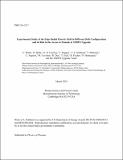| dc.contributor.author | Plank, U. | en_US |
| dc.contributor.author | Brida, D. | en_US |
| dc.contributor.author | Conway, G.D. | en_US |
| dc.contributor.author | Happel, T. | en_US |
| dc.contributor.author | Hubbard, Amanda E. | en_US |
| dc.contributor.author | Pütterich, T. | en_US |
| dc.contributor.author | Angioni, C. | en_US |
| dc.contributor.author | Cavedon, M. | en_US |
| dc.contributor.author | Dux, R. | en_US |
| dc.contributor.author | Eich, T. | en_US |
| dc.contributor.author | Fischer, R. | en_US |
| dc.contributor.author | Hennequin, P. | en_US |
| dc.contributor.author | ASDEX Upgrade Tea, | en_US |
| dc.date.accessioned | 2025-03-21T20:23:12Z | |
| dc.date.available | 2025-03-21T20:23:12Z | |
| dc.date.issued | 2023-03 | |
| dc.identifier | 23ja007 | |
| dc.identifier.uri | https://hdl.handle.net/1721.1/158736 | |
| dc.description | Submitted for publication in Physics of Plasmas | |
| dc.description.abstract | The formation of the equilibrium radial electric field (Er) has been studied experimentally at ASDEX Upgrade (AUG) in L-modes of ’favourable’ (ion ∇B-drift towards primary X-point) and ’unfavourable’ (ion ∇B-drift away from primary X-point) drift configuration, in view of its impact on H-mode access, which changes with drift configuration. Edge electron and ion kinetic profiles, impurity velocity and mean-field Er profiles across the separatrix are investigated, employing new and improved measurement techniques. The experimental results are compared to local neoclassical theory as well as to a simple 1D scrape-off layer (SOL) model. It is found that in L-modes of matched heating power and plasma density the upstream SOL Er and the main ion pressure gradient in the plasma edge are the same for either drift configuration, whereas the Er well in the confined plasma is shallower in unfavourable compared to favourable drift configuration. The contributions of toroidal and poloidal main ion flows to Er, which are inferred from local neoclassical theory and the experiment, cannot account for these observed differences. Furthermore, it is found that in L-mode the intrinsic toroidal edge rotation decreases with increasing collisionality and it is co-current in the bananaplateau regime for all different drift configurations at AUG. This gives rise to a possible interaction of parallel Pfirsch-Schlüter flows in the SOL with the confined plasma. Thus, the different H-mode power threshold for the two drift configurations can not be explained in the same way at AUG as suggested by LaBombard et al. for Alcator C-Mod1. Finally, comparisons of Er profiles in favourable and unfavourable drift configuration at the respective confinement transitions show that also there the Er gradients are all different, which indirectly indicates a different type or strength of the characteristic edge turbulence in the two drift configurations. | |
| dc.publisher | AIP | en_US |
| dc.relation.isversionof | doi.org/10.1063/5.0102763 | |
| dc.source | Plasma Science and Fusion Center | en_US |
| dc.title | Experimental Study of the Edge Radial Electric Field in Different Drift Configurations and its Role in the Access to H-mode at ASDEX Upgrade | en_US |
| dc.type | Article | en_US |
| dc.contributor.department | Massachusetts Institute of Technology. Plasma Science and Fusion Center | |
| dc.relation.journal | Physics of Plasmas | |
